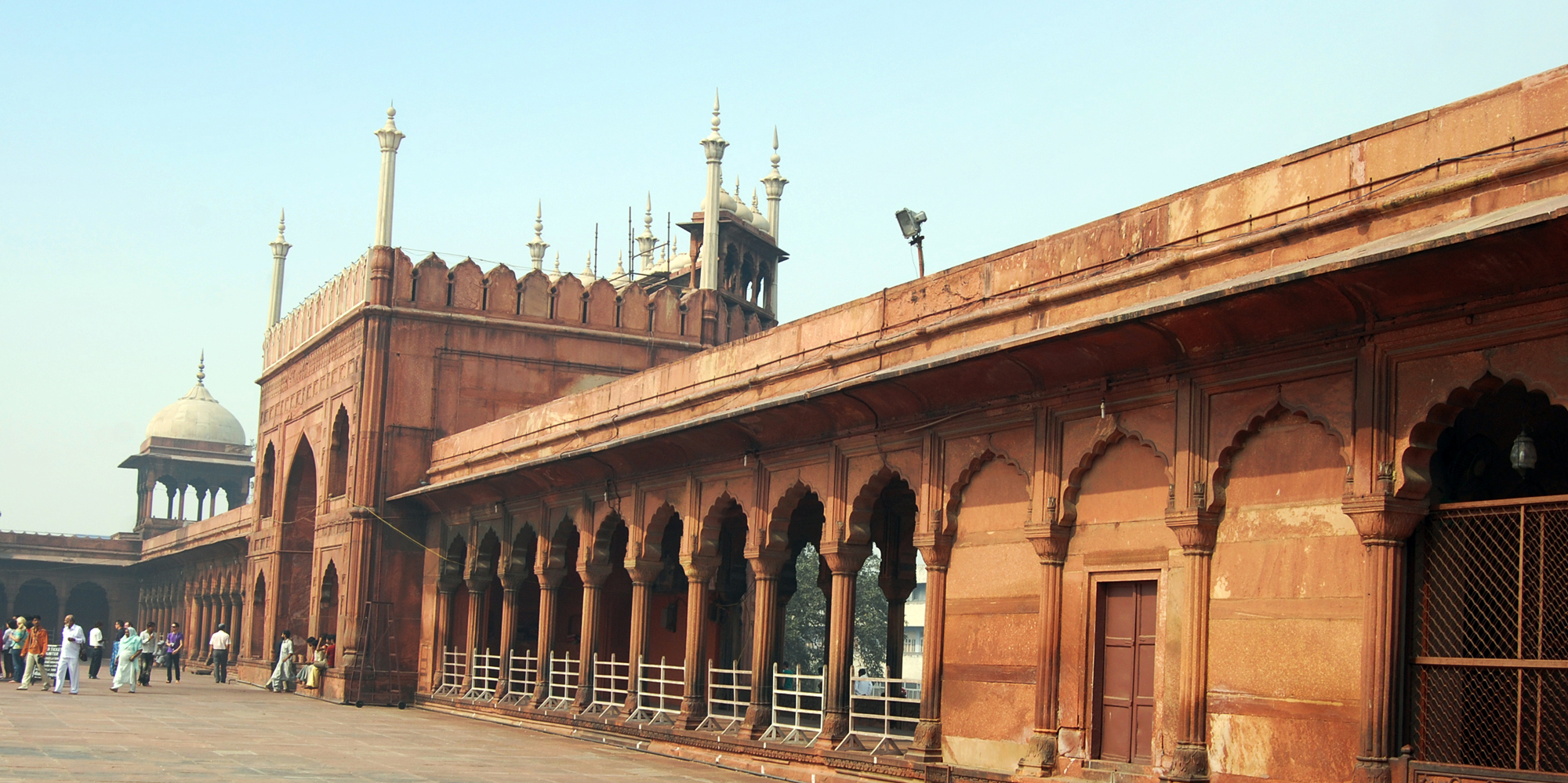Jama Masjid, Delhi Travel Information
Commissioned by the Mughal Emperor Shah Jahan, builder of the Taj Mahal, and completed in the year 1628, Jama Masjid is the largest and best-known mosque in India. Jama Masjid, is a reference to the weekly Friday noon congregation prayers of Muslims, Jummah, which are usually done at the congregational mosque (jami' Masjid). The courtyard of the mosque can hold up to twenty-five thousand worshippers. Jama Masjid also houses several relics in a room in the north gate, including an antique copy of the Qur'an written on deer skin. The mosque was the result of the efforts of over 5,000 workers, over a period of seven years. The courtyard of Jama Masjid can be reached from the east, north and south by three flights of steps, all built of red sandstone. Under the domes of the mosque is a hall with seven arched entrances facing the west. The walls of Jama Masjid, up to the height of the waist, are covered with marble. Beyond this is a prayer hall with eleven arched entrances. Over these arched entrances there are tablets of white marble, four feet long and 2.5 feet wide, inlaid with inscriptions in black marble. These inscriptions give the history of the building of the mosque, and glorify the reign and virtues of Shah Jahan. The slab over the centre arch contains simply the words "The Guide." The floor of the mosque is covered with white and black marble ornamented to imitate the Muslim prayer mat; a thin black marble border is marked for the worshippers, 3feet long and 1.5 feet wide. In total there are 899 such spaces marked in the floor of Jama Masjid.

View All Sights of Delhi
Sights Main Menu >>

